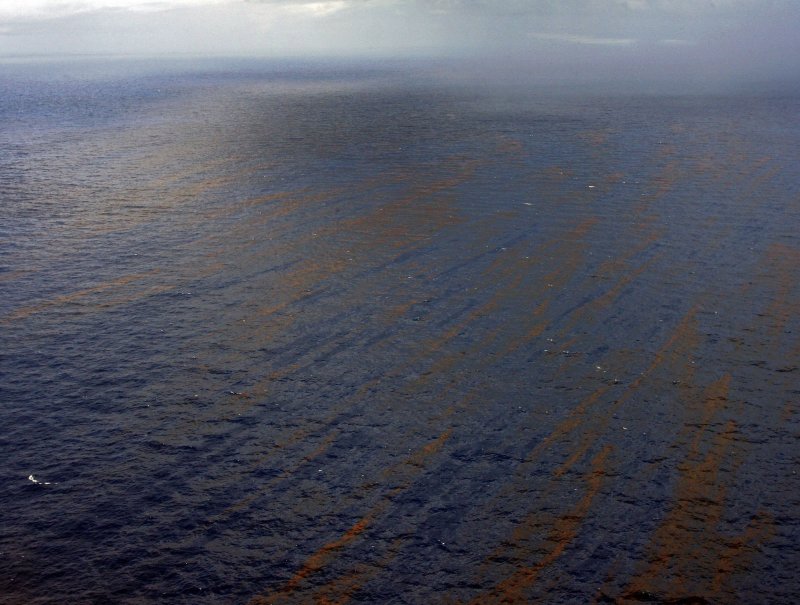1 of 2 | Oil creates a pattern in the water of the Gulf of Mexico, July 3, 2010 near the BP Deepwater Horizon accident site. BP continues its attempts to stem the flow of oil from its rig, which exploded and sank in the Gulf in April. UPI/A.J. Sisco.. |
License Photo
NEW ORLEANS, Dec. 16 (UPI) -- Don't think that because BP is moving from cleanup to restoration with a $1 billion pledge that the southern U.S. coast is clean, wildlife officials said.
BP, under an agreement reached in response to the April 2010 oil spill in the Gulf of Mexico, agreed to commit $1 billion to help fund eight proposed restoration projects along the southern U.S. coast. More are expected, the company said.
"BP is committed to the gulf and we look forward to working with state and federal trustees to identify additional early restoration projects that benefit the gulf ecosystem and the people who live, work or visit the region," Mike Utsler, head of BP's gulf coast restoration organization, said in a statement.
The April 2010 incident touched off the worst spill in U.S. history. The U.S. Coast Guard said it considers 90 percent of the originally contaminated area clean. But Doug Inkley, the top wildlife biologist for the National Wildlife Foundation, said that remaining 10 percent is considerable.
"The gulf is not clean," he said. "No one can tell you how much oil remains at the bottom floor (of the ocean) but it is clearly there because it has been seen."
Scientists said monitoring is needed to examine long-term effects of the spill. They warn, however, that trying to get all of the oil out of the ecosystem might not be worth the risk.
"If you try to get every drop of oil you're going to further destroy those habitats and do more damage than good," said Edward Overton, an environmental scientist at Louisiana State University. "You have to get it from the edges and I think they've done what they can up to this point."















